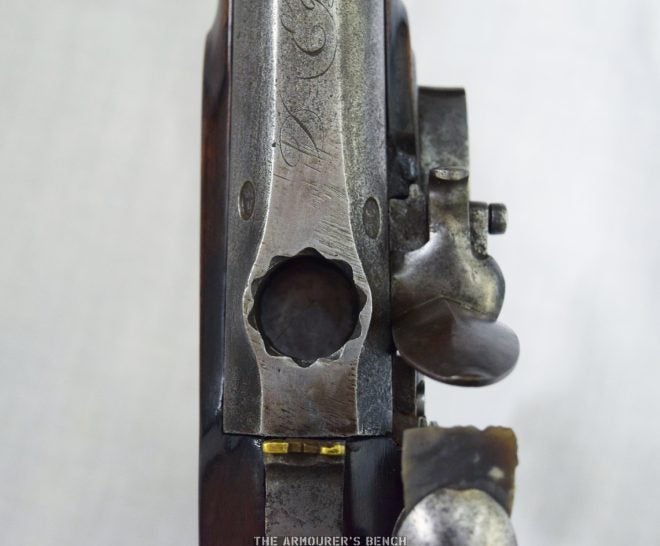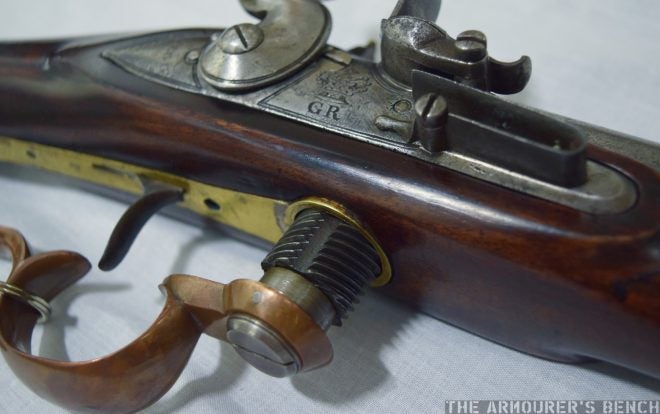In an age when three or four rounds a minute from a trained infantryman was considered an impressive standard, six or even seven shots a minute which were more accurate than those from an average musket was tactically groundbreaking. Patrick Ferguson’s rifle was what would today be described as a ‘force multiplier’.
I’ve wanted to examine a Ferguson up close for years but every time I’ve gotten close I’ve never quite been able to get hands on. But recently I finally got a chance and I’ve put together a video looking at the origins of the design, how it was developed and how it was used. Developed in the mid-1770s by Major Patrick Ferguson, a young Scottish light infantry officer, the rifle was heavily influenced by Isaac de la Chaumette’s earlier breech loading system. The rifle used a threaded breech plug which screwed up and down to close the action.
Ferguson gained notoriety when he put on an impressive demonstration for senior officers on a wet and windy morning in 1776. He hit a target 200 yards away 4 or 5 times in a minute before firing 4 more rounds while on the move before finally scoring a bullseye at 100m from prone. His demonstration had a dramatic effect and the British Army’s Board of Ordnance ordered his rifle into production and he was given command of a company of riflemen.
The Ferguson Rifle’s threaded breech plug is opened and closed by screwing and unscrewing it. The breech piece has a 10 thread multi-start screw, which for the engineers out there opens at 1 TPI, this allows it to open fully with just one 360-degree rotation! The threads were hand cut by craftsmen and took over 10 hours to cut using treadle lathes and lapping techniques.
Ferguson led his experimental corps of riflemen during the 1777 Philadelphia campaign and fought at the Battle of Brandywine. Sadly, during the battle Ferguson was badly wounded by a musket ball, suffering a shattered right elbow, and his unit was disbanded. Ferguson recovered but was later killed in 1780, during the Battle of Kings Mountain.

Here we can see the Ferguson Rifle’s breech unscrewed and open, each of the ‘points’ represents a thread on the breech plug. Ferguson’s rifle worked by turning the trigger guard 360 degrees to open the breech. (Matthew Moss)
The Ferguson Rifle has the distinction of being the first breech-loading rifle adopted for service by the British Army. Although its service life was relatively short and its use limited it paved the way for later attempts at introducing rifle technology within the British Army. Sadly, with so few made and with the death of its inventor, the rifle did not have the opportunity to fully prove itself. I’ve also written a much more in-depth article about Ferguson and his rifle here.
Miles was kind enough to help with the research for the video/article and let me use some of his photos of other surviving Ferguson Rifles, you should check out his article on the Cowan Ferguson reproduction and his own video about the Ferguson Rifle here.
 Your Privacy Choices
Your Privacy Choices
